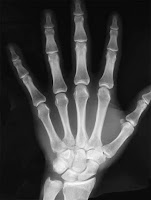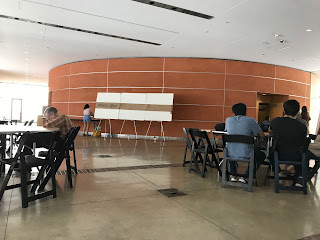Week 4- Medical Technology and Art

On thing that I have not has a lack of in my life time has been injuries. And with these injuries have come lots of tests including x-rays, MRIs, CT Scans, and likely others I was not even aware of. My first memory of such tests was an x-ray I had taken of my wrist after a hockey accident. As explained in the lecture, Rontegen’s early testing paved the way for doctors to have the ability to see my hand without actually making an incision. The thing that stuck with me more however was when Professor Vesna described Rontegen’s wife’s reaction to seeing her X-Ray, which was, “I can see my death”. When skin is removed, the bone is all our hand is left with While I’ve looked at pictures of x-rays probably hundreds of times, never before had I considered it a preview of what was to come in life. While X-rays was my first memory of medical technology, it was certainly not my most striking. That title belongs squarely in the corner of the CT



